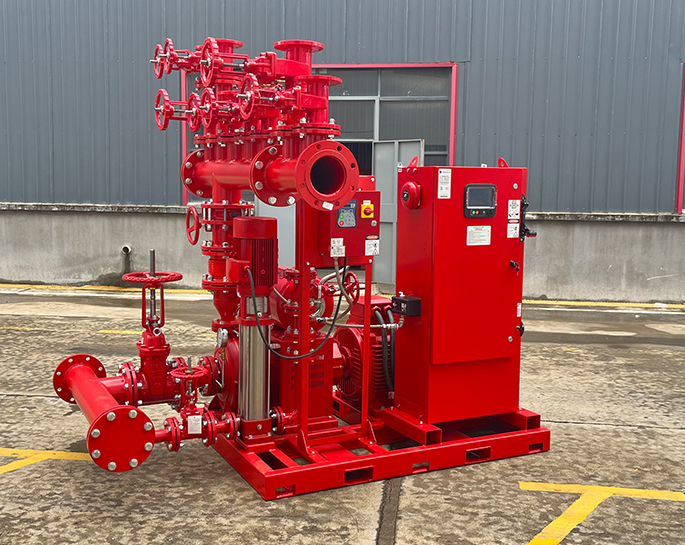Yes, fire pumps can be installed in locations with limited space, but there are specific considerations and requirements that must be taken into account to ensure proper installation, operation, and maintenance. Here are some key factors to consider when installing fire pumps in locations with limited space:
1. **Local Codes and Regulations:**
- Check local building codes, fire codes, and other regulations to ensure compliance with space requirements for fire pump installations. Different jurisdictions may have specific rules regarding the minimum clearance around fire pumps and related equipment.
2. **Manufacturer's Guidelines:**
- Follow the manufacturer's guidelines and recommendations for the specific fire pump model being installed. Manufacturers provide specifications regarding clearances, ventilation, and other installation requirements to ensure optimal performance and safety.
3. **Space Planning:**
- Carefully plan the layout of the space to maximize efficiency and minimize wasted space. Consider factors such as pump size, driver type (electric motor or diesel engine), controller placement, and access for maintenance.
4. **Accessibility:**
- Ensure that the fire pump and its components are easily accessible for routine inspections, testing, and maintenance. Adequate space should be provided for personnel to maneuver around the pump and related equipment.
5. **Ventilation:**
- Adequate ventilation is crucial to dissipate heat generated by the fire pump and prevent overheating. Ensure that the installation location allows for proper air circulation and cooling.
6. **Vibration Isolation:**
- Install the fire pump on a solid foundation with appropriate vibration isolation measures. Vibration isolators help reduce the transmission of vibrations to surrounding structures and equipment.
7. **Noise Considerations:**
- Evaluate the potential noise generated by the fire pump during operation. If the pump is installed in a space where noise is a concern, consider additional measures such as sound insulation or locating the pump in a separate room.
8. **Clearance Requirements:**
- Check and adhere to the specified clearance requirements for various components of the fire pump system, including pump motors, controllers, and other accessories.
9. **Alternative Configurations:**
- Explore alternative configurations, such as vertical inline fire pumps, which may have a more compact design compared to horizontal pumps. Vertical pumps can save floor space and simplify installation.
10. **Remote Locations:**
- In some cases, it may be possible to install fire pump components in remote locations or use creative space-saving solutions, such as mezzanine installations, as long as they meet safety and accessibility requirements.
It is essential to consult with a qualified fire protection engineer or professional during the planning and installation process. Additionally, involving the local fire authority or building inspector is important to ensure that the installation complies with all applicable codes and regulations. Proper installation and adherence to guidelines contribute to the effectiveness and reliability of fire pump systems, even in locations with limited space.



